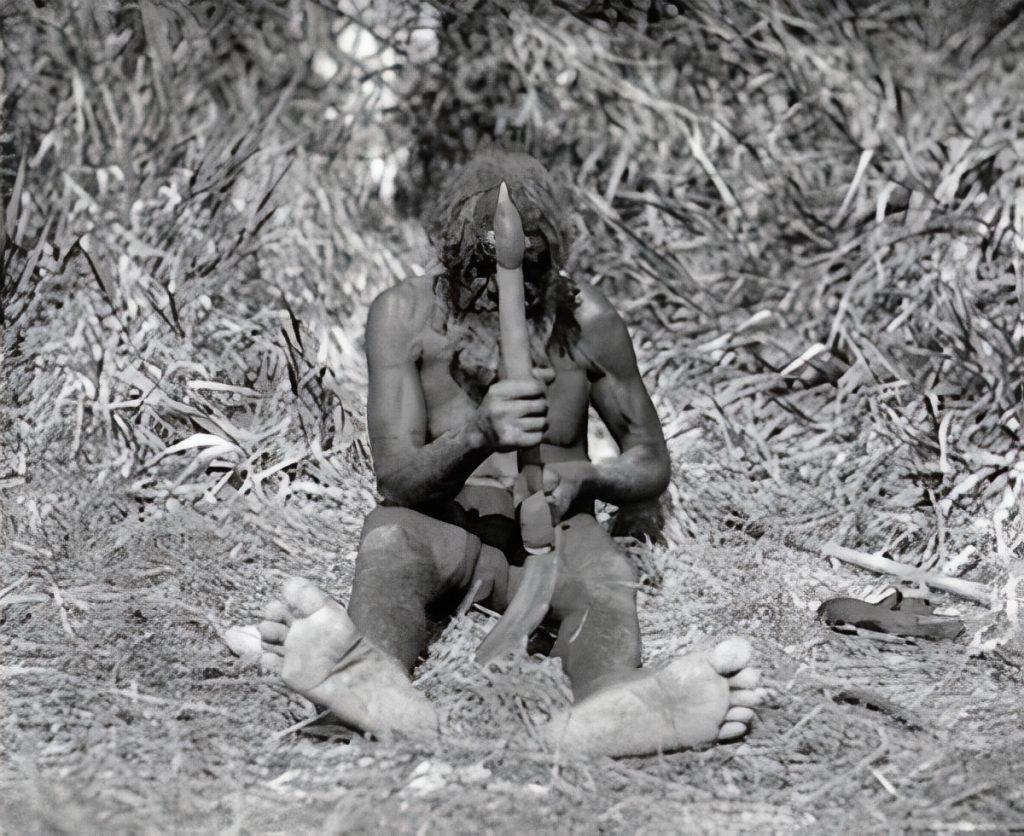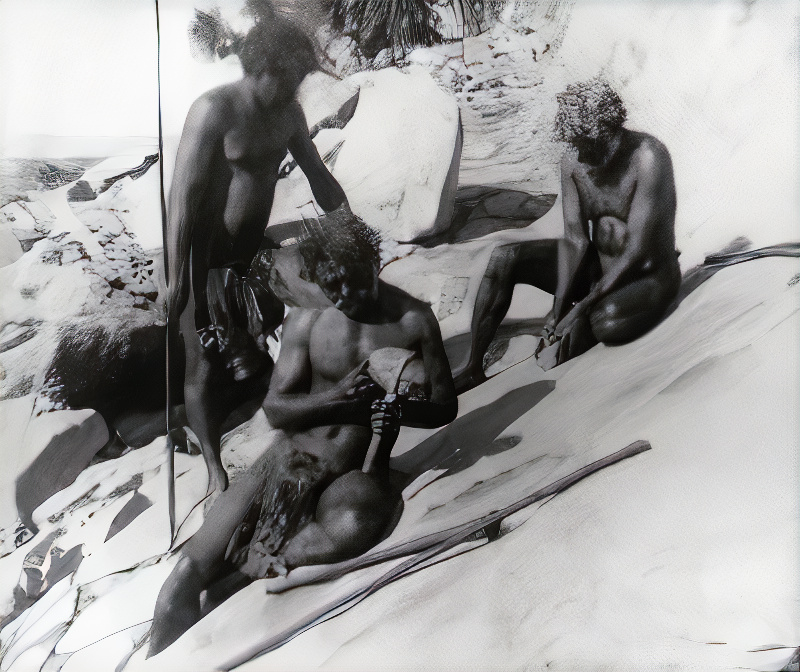STONE TOOLS AND ARTEFACTS
Stone tools were used to cut wood and bark from trees, to fashion wooden tools, weapons and utensils, and to pound and grind food. Stone was also used to make spear barbs (in south-eastern Australia in the past), spear points, and knives.
The range of Aboriginal stone tools and artefacts utilised in Australia includes:
- Crude hand-held choppers and hand axes used for cutting into trees and butchering animals.
- Ground-edge axes of various shapes and sizes, hafted to short wooden handles. (Ground-edge or edge-ground means that an edge of the axe has been ground or rubbed to make it smooth and sharp.) These were usually made from diorite, basalt and other volcanic rocks, which were traded across the country. In northern Queensland, large ground-edge axes were made from thin sections of slate attached to wooden handles.
- Chisels (adzes) of various shapes and sizes, used to gouge and shape wooden items. (For example, to hollow out wooden coolamons throughout inland Australia.)
A stone chisel (tuhla) is mounted with plant gum (mindrie) to the end of a wooden stick (koondi), and used to shape a boomerang (kirra). These are local names used by the Wangkangurru people of inland Australia.
Photograph taken in the 1920s, from Savage Life in Central Australia, Second Edition 2009.
- Scrapers of various shapes and sizes, used to plane (smooth) wood when making boomerangs, shields and other wooden items. These ranged in size from large horsehoof cores the size of one’s hand, to small thumb-nail scrapers the size of one’s fingernail. Small scrapers were attached with hard resin to the handles of spearthrowers, clubs and sticks.
- Smoothing stones. Coarse stones and rock surfaces were used like sandpaper to polish the surfaces of wooden items.
- Drills. Finely-pointed rocks were used to bore holes for attaching string to bullroarers and shell pendants.
- Stone knives were made from slivers of quartzite and other silcrete, and had handles made from the resin of native bees, spinifex, xanthorrhoea (grass trees) and other plants.
- Stone spear points. While many spears had wooden tips, those across northern Australia were made with fine blades of silcrete and quartzite. These were associated with magical qualities, which were believed to improve accuracy for the operator.
- Stone barbs. Small slithers of stone (microliths) known as backed blades were used to form barbs on some spears, and possibly serrations on wooden knives.
- Weights, sinkers and files. Stone weights were used to hold down woven fish traps in marine and freshwater environments. Small stones were used as sinkers when fishing with shell hooks. Thin coarse stones were used as files to shape fishing hooks from shells.
- Anvils. Anvils are blocks of stone, often hard quartzite about 30 to 50 cm across, used for working on. They are common on hilltops across northern Australia.
- Hammer stones are dense round stones used to strike off blades and flakes from cores, to percuss and produce sharp edges to stone cutting tools, and to dress (with multiple small strikes) stone axes and other stone tools.
- Lower grinding stones. These include large millstones used for grinding seed to make damper throughout inland Australia, and nardoo stones, which are smaller chunky rocks with a depression in the top, used as mortars when crushing nardoo and other edible seeds and fruit.
- Top grinding stones. These include mullers (top stones with a flat base used with a back-and-forth action) to grind seeds into powder, and pounders (rounded pounding stones used with a hammering action) to crush food and macerate other items, such as bark and roots to tease out fibres when making string.
Upper and lower grinding stones made from basalt, used to grind vegetable, nut and seed foods. Cedar Creek, north Queensland, circa 1912. In this region, grindstones about 60cm long and 30 cm wide were kept in every hut. When people moved camp, they left behind the heavy lower stone, but took the top stone with them. After a season, they would return to the area and use the same lower stone again.
Photograph from 17 Years Wandering Among the Aboriginals.
- Sacred stone objects (tjuringa). A variety of natural, waterworn, shaped and painted stones were utilised throughout Australia as sacred stones. Many of these were stored in sacred places, buried beneath the ground or cached in trees, rock crevices, or the backs of caves and rock shelters.
- Magic stones. People carried small magic stones in order to cure sickness and ward off evil spirits. These included naturally-occurring clear quartz crystals and any unusually-coloured or unusually-shaped small stone.










